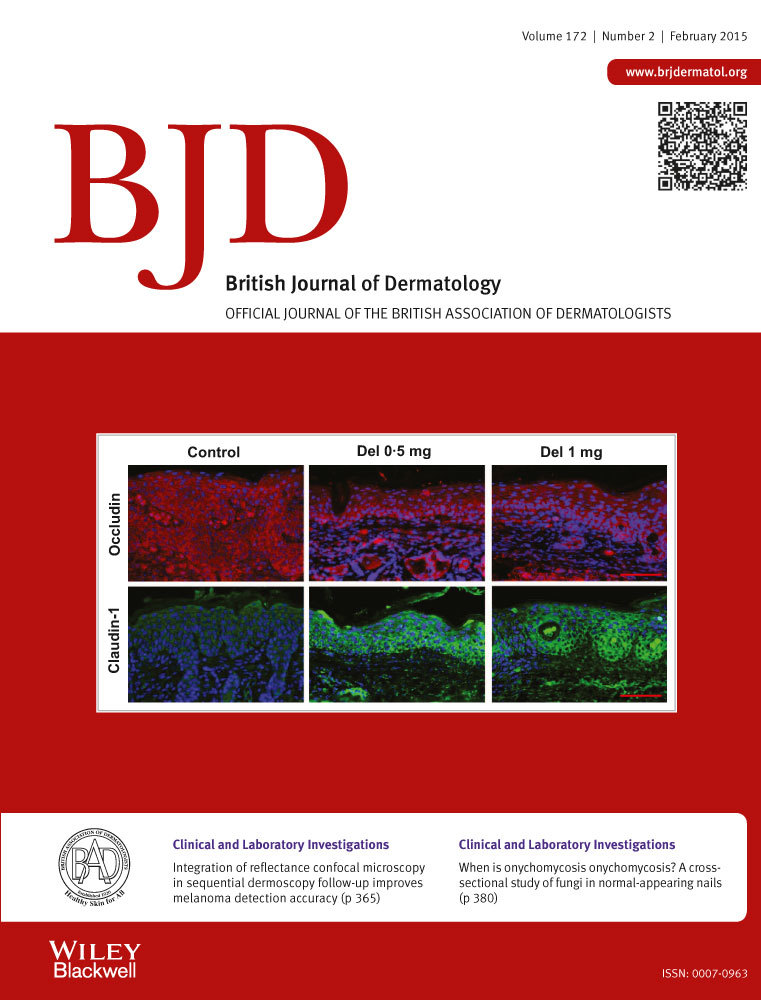Clindamycin phosphate 1·2%–benzoyl peroxide 3·0% fixed-dose combination gel has an effective and acceptable safety and tolerability profile for the treatment of acne vulgaris in Japanese patients: a phase III, multicentre, randomised, single-blinded, active-controlled, parallel-group study†
Summary
Background
A topical fixed-dose clindamycin phosphate 1·2% and benzoyl peroxide 3·0% combination gel (CLNP/BPO 3%) is known to be effective and safe in white people with acne.
Objectives
To evaluate the efficacy and safety of CLNP/BPO 3·0% topically applied once or twice daily vs. CLNP twice daily in Japanese patients with acne.
Methods
Eight hundred patients were randomized to receive CLNP/BPO 3·0% once daily, CLNP/BPO 3·0% twice daily or CLNP twice daily for 12 weeks. Primary endpoints were absolute change in number of total lesions (TLs) from baseline to week 12 to demonstrate the superiority of CLNP/BPO 3·0% twice daily and noninferiority of CLNP/BPO 3·0% once daily vs. CLNP twice daily. Secondary endpoints were absolute and percentage changes in TLs, inflammatory lesions (ILs), noninflammatory lesions (non-ILs) and Investigator's Static Global Assessment (ISGA) score. Safety assessments included adverse events (AEs), laboratory tests, vital signs and local skin tolerability.
Results
Change in TL counts from baseline to week 12 for CLNP/BPO 3·0% twice daily was superior to CLNP twice daily (difference −11·0; P < 0·01); CLNP/BPO 3·0% once daily was not inferior to CLNP twice daily (difference −10·3; P < 0·01). Absolute and percentage reductions in TL, IL and non-IL counts and ISGA score were greater for CLNP/BPO 3·0% once or twice daily than for CLNP twice daily with significant differences seen from early on. Most AEs were mild or moderate. The incidence of adverse drug reactions was higher for CLNP/BPO 3·0% once (24·0%) or twice (35·1%) daily than for CLNP twice daily (9·0%).
Conclusions
Compared with CLNP twice daily, CLNP/BPO 3·0% once daily was more effective and CLNP/BPO 3·0% twice daily at least as effective, with an early onset of action and an acceptable safety and tolerability profile in Japanese patients.




